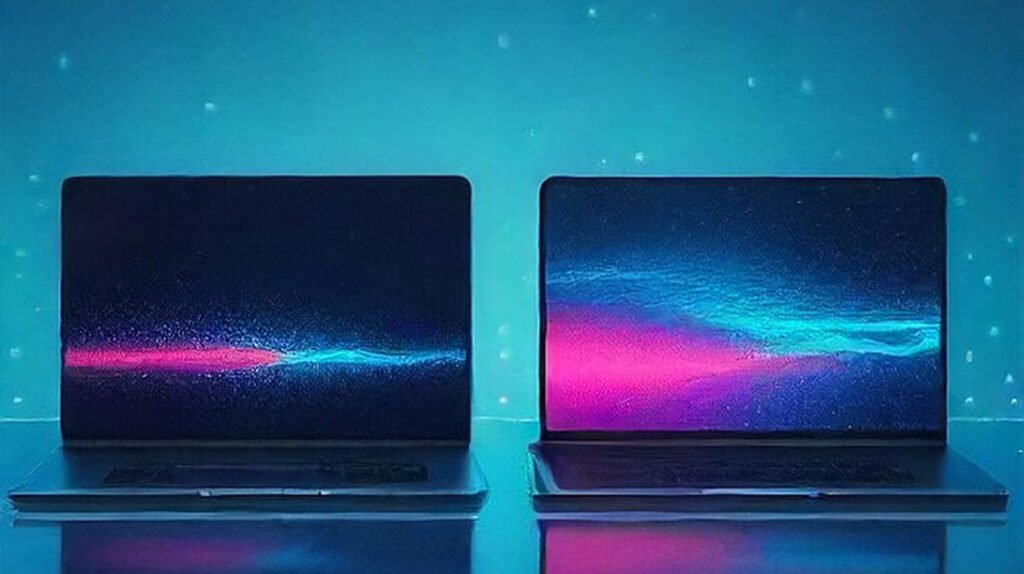Ever wonder what’s lighting up the future of laptop displays? We’re at a crossroads where Mini-LED and OLED are battling for the top spot. Both promise jaw-dropping visuals, but they’ve got their quirks. Mini-LED packs a punch with brightness, while OLED wows with vibrant colors and deep blacks. So, which one’s right for you? Let’s dive into the tech specs, compare their impacts on our screen time, and predict where your next breathtaking display will come from. Buckle up—it’s a bright future ahead!
Advantages and Disadvantages of Mini-LED and OLED
OLED displays are like the rockstars of the screen world, offering top-notch color accuracy and viewing angles that are hard to beat. When you look at an OLED screen, the colors pop with vibrancy, making everything from gaming landscapes to cinematic scenes look absolutely stunning. Plus, OLEDs don’t need a backlight, which means they can be super thin and consume less power—a win-win for those looking to save on battery life. Their self-emissive nature also contributes to almost perfect viewing angles, so whether you’re looking straight on or from the side, the picture remains consistent.
Mini-LEDs bring their own set of perks to the table, especially when it comes to brightness and affordability. These displays can reach higher peak brightness levels, which is ideal if you’re using your laptop in bright environments. The tech behind Mini-LEDs is an upgrade from the traditional LED, using smaller LEDs for better dimming precision. This makes them a more cost-effective option than OLEDs, offering a significant improvement over older display models without breaking the bank. So, if you’re looking for bright and budget-friendly, Mini-LEDs might be your go-to.
But let’s not gloss over the downsides. OLED displays, while stunning, have a bit of a reputation for burn-in, where static images can leave a ghostly trace over time. Their lifespan is generally shorter, which might be a concern for long-term use. On the other hand, Mini-LEDs can suffer from a blooming effect, where there’s unwanted halo around bright objects on dark backgrounds due to its dimming zones. And while they are bright, their reliance on a backlight can limit viewing angles compared to OLED. Here’s a quick snapshot of their pros and cons:
| Technology | Advantages | Disadvantages |
|---|---|---|
| OLED | Superior contrast, vibrant colors, better viewing angles, energy-efficient | Prone to burn-in, shorter lifespan |
| Mini-LED | Higher brightness, more affordable | Blooming effect, limited viewing angles |
Pricing and Market Trends
If you’re wondering about the price tags on Mini-LED and OLED displays, you’re not alone. Mini-LED displays are usually the cheaper option, with prices kicking off around $500. OLED displays, on the other hand, start at about $700-$800 and can skyrocket past $1,500 for those top-tier models. But here’s the twist: the price gap between these two is starting to shrink. That’s because making OLEDs is getting cheaper, thanks to advances in production techniques. So, if you’ve been eyeing an OLED for its killer contrast and sleek design, it might not be as far out of reach as you think.
- Tech advancements making OLEDs cheaper
- Increased competition among manufacturers
- Demand for higher-quality displays
Looking ahead, the future of display tech is looking bright. Market predictions are pointing to more people jumping on the Mini-LED and OLED bandwagon. As manufacturing costs go down, you can bet both technologies will see a boost in adoption. This shift might even sway consumer preferences, with more folks leaning towards these advanced displays for their laptops. So, whether you’re a gamer, a creative pro, or just love top-notch visuals, keep an eye on these trends—they might just shape what you see on your next laptop screen.
Final Words
We covered a lot about Mini-LED and OLED, from how they work to their perks and quirks. We also peeked into what they mean for gamers and creative pros. Toss in some pricing talk and future tech trends, and we touched almost every base!
Picking between Mini-LED and OLED depends on what you need. Gaming on OLED is epic for sure, but Mini-LED serves up that extra brightness when you need it.
The future of laptop displays: Mini-LED vs. OLED, is bright and buzzing with possibilities. Happy tech hunting!
FAQ
Is Mini LED better than OLED for laptops?
Mini LED brings the heat with brightness and affordability. But, OLED’s great for contrast and viewing angles. Your pick depends on what you value more: eye-popping lights or stunning colors.
Is the MacBook Pro Mini LED better than OLED?
MacBook Pro’s Mini LED shines brighter and costs less than OLED. OLED dazzles with contrast and color. Choose Mini LED if you love brightness; opt OLED for color depth.
What’s better: Mini LED or QD OLED monitors?
Mini LED aces brightness. QD OLED nails buttery-smooth colors and contrast. If max brightness wins your heart, go Mini LED. For the color-perfect look, vote QD OLED.
Which is better: LED or OLED laptop screens?
OLED’s the beauty queen with deeper blacks and vibrant colors. LED’s got your back with brightness and better pricing. For glitzy colors, go OLED. For wallet-friendliness, LED’s your pal.



